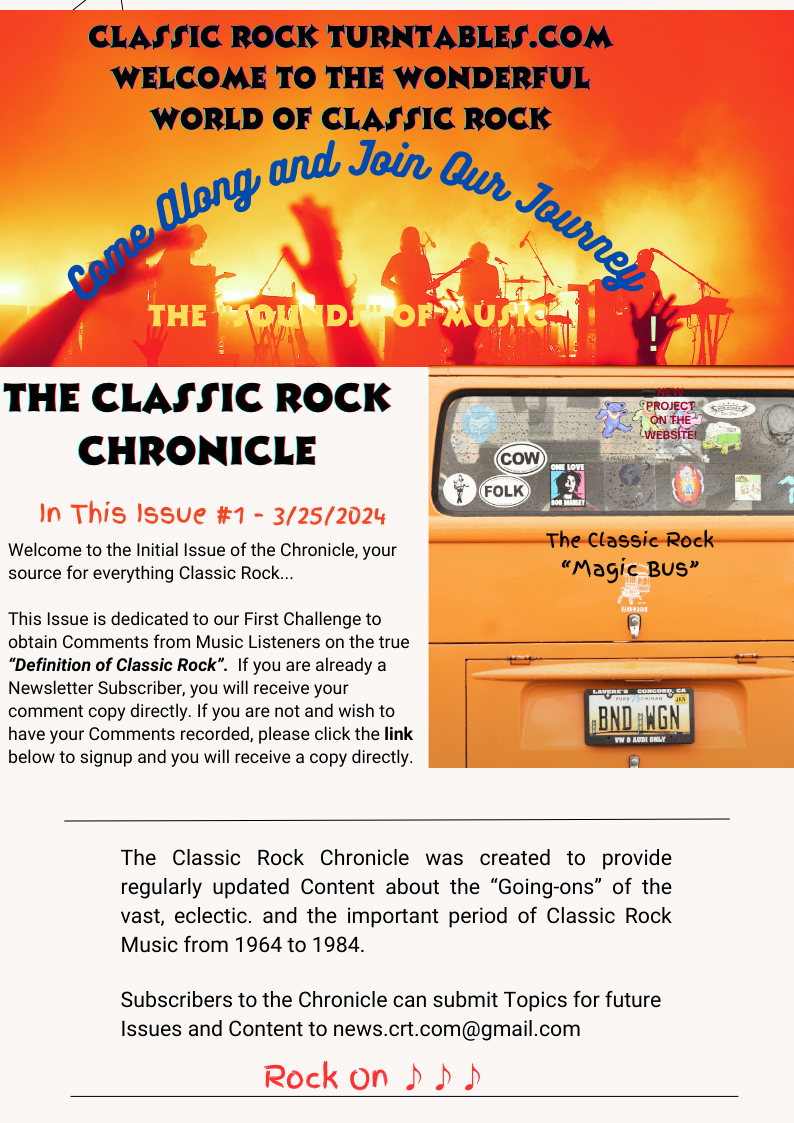

This Issue of the Chronicle, we present Part #5 (The Riverboat Era) of our 12-part series of the "History of the Sounds of Modern Music." Our objective is to follow the Sounds made by innovative Humans and their Instruments that have evolved throughout the Centuries of Man-on-Earth.
Part #1 - Early Civilizations Part #2 - Pre Civil War
Part #3 - Civil War and Post Part #4 -New Orleans Scene
Part #5 - The River Boat Era Part #6 - The Big Cities
Part #7 - The Roaring 20s Part #7 - The Swing Era
Part #8 - Post World War II Part #9 - The 1950s
Part #9 - The 1960s Part #10 - Woodstock Era
Part #11 - The 1970s Part #12 - The 1980s
The Classic Rock Chronicle
I Issue #11 June 28, 2024
Everything Classic Rock... the CRocker's Voice
The Classic Rock Chronicle was created to provide regularly updated Content about the "Goings-on" of the Vast, eclectic, and important period of Classic Rock from 1964 to 1984... Come along and enjoy the ride, Mates
Subscribers to The Chronicle can submit Topics for future Issues and Content to news@classicrockturntables.com
History of the “Sounds” of Music Part #5
The Riverboat Era Evolution of the Sounds of Music
By William W. Nelson
Founder of the Asheville School of Classic Rock
************
Introduction
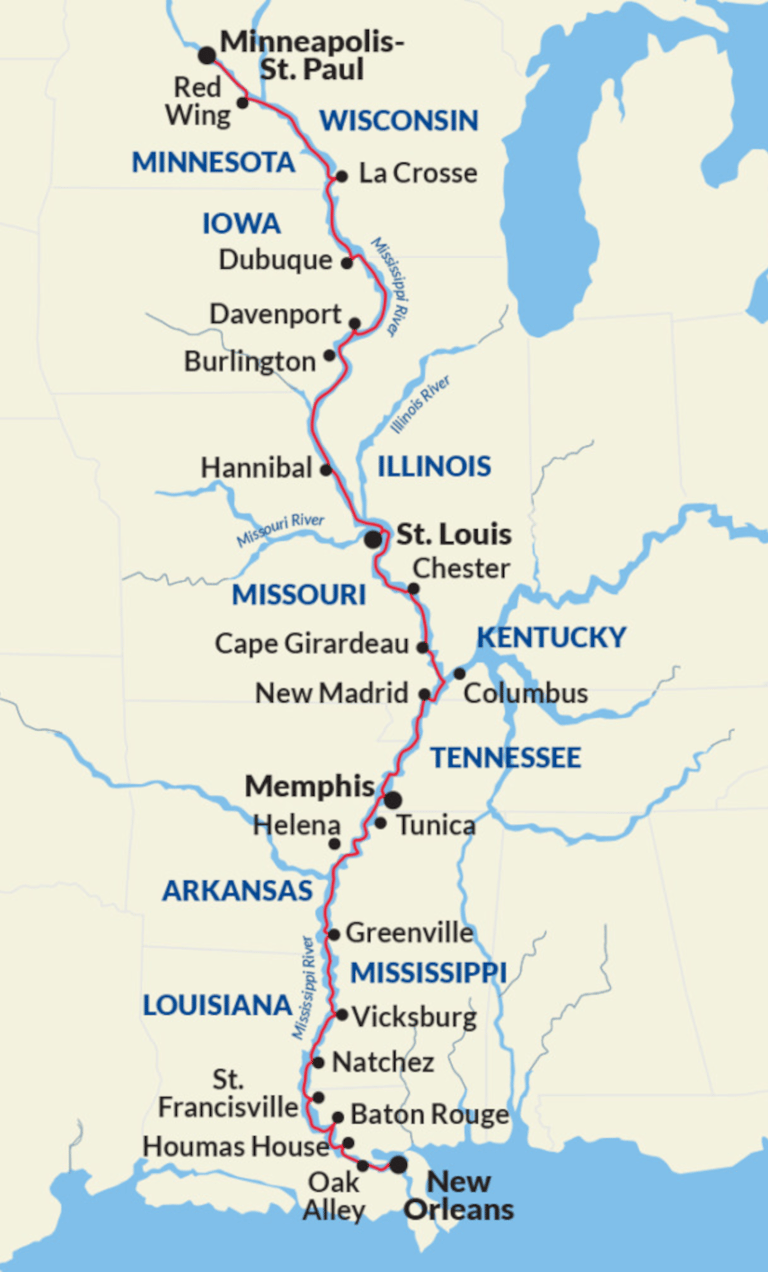

Introductiom
This Map shows the 15 Stops of the Main Excursion Trade Riverboats that were modified from Packet (Containers) Streams to satisfy the immense demand of Tourists to travel to New Orleans... prior to 1929 and the ability of the Common Man to own an Automobile.
In 1884 Captain John Streckfus, Sr. founded the Acme Packet Company located in Rock Island, Illinois. He had a small Fleet of Packet (Containers) type Boats that also carried Passengers... by 1900, he saw the inevitable news that the Railroads would take the majority of his traffic away.
He reorganized and turned the majority of his Fleet into First-class excursion Boats... and, amongst other amenities to please passengers, he offered the top Bands from New Orleans to Trip along and make a decent Buck purveying their Trade.
The Streckfus Steamship Line made regular trips to St. Paul from New Orleans and was the first to serve fine Dining, Liquor, and Musical entertainment on the River. The Policy toward Black passengers reflects the common practices of Segregation at the time... Black Patrons were only permitted on Monday Nights.

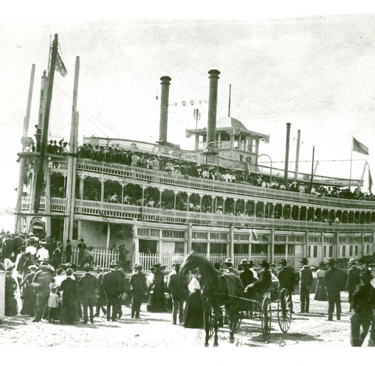
The primary function of the Music on Streckfus Boats was to entertain Passengers through Dancing. The Music Styles evolved with popular trends, including a variety of Genres such as Waltzes, Polkas, Swing, Fox Trots, Ragtime, Folk Ballads, Latin Music, and something new to most Patrons... proto Jazz.
One of the most notable bandleaders on the Streckfus Boats was Fate Marable, who began hiring New Orleans Musicians in the early 20th century. These Musicians brought a unique and animated rhythmic style that was a blend of "edge" and "polish," contributing to a hybrid Musical form that was both refined and energetic. Marable's Bands included famous Musicians like Louis Armstrong, who played on the Dixie Belle Steamboat.
Captain John Streckfus came from a Musical Family and played the Fiddle... his Son Joseph was trained to build a mix of the Standards with the evolving Sounds coming out of New Orleans... introducing it only after the Familes bedded down and the younger Crowd danced the night away.
In 1903, the first Black Musician hired was a Pianist, one Charlie Mills, who was added to a White Orchestra... a four-piece Group consisting of Piano, Trumpet, Violin, and Drums. They played popular mostly ragtime numbers and improvisation was not allowed by the strict Captain John who attended rehearsals, and if the proper Tempo was not maintained, somebody got Holy Hell!
In 1907, Mills moved onto Chicago and one Fate Marble was hired to replace him... of all the Band leaders Strechfus hired, she was trusted the most to help the evolution of Sounds along. He gave her control of hiring and she was smart enough to ease her way into Blazz Sounds... in 1918, with the exodus from Storyville, he brought in Musicians to play the hot new proto-Jazz Music from New Orleans.

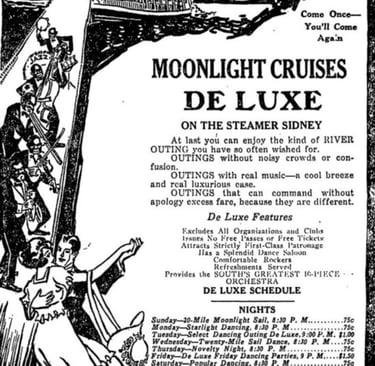
The Armstrong Train
Louis Armstrong was born in 1901 in New Orleans and raised by his Grandmother in poverty in a rough neighborhood known as "The Battlefield" in the Southern section of Rampart Street... which forms the inland or Northern border of the French Quarter (Vieux Carre). When he was 11, he dropped out of school and joined with some Boy Friends who sang in the streets begging for money... he met a Cornetist, one Bunk Johnson, who taught him to play by ear.
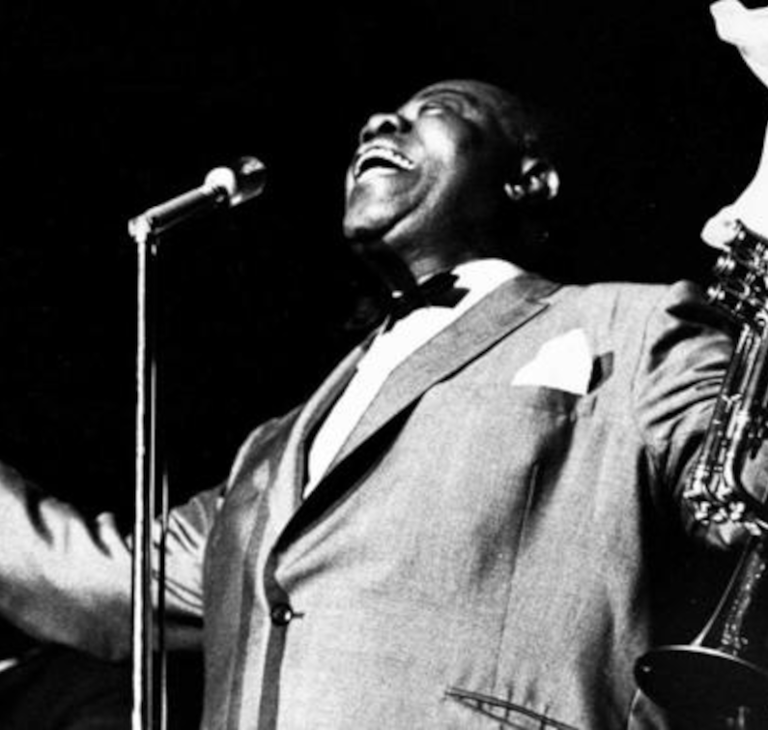

By 1912, Joseph "King" Oliver had performed in some of the most influential Brass Bands in New Orleans, including the Onward Brass Band, the Eagle Band (which included ex-members of Buddy Bolden’s group), and A. J. Piron’s Olympia Band under Freddy Keppard.
On New Year’s Eve 1912, he was arrested and sent to the Colored Waif’s Home for Boys. There, under the tutelage of one Peter Davis, he learned how to properly play the Cornet, eventually becoming the leader of the Waif’s Home Brass Band. Released from the Waif’s Home in 1914, Armstrong set his sights on becoming a professional musician.
When Louis was released from the Colored Waif's Home, he returned to live with his Mother and Stepfather. Louis worked as a Coalman during the day and at night he played in a Dance Hall job at Henry Ponces Saloon where Black Benny became Mentor. He worked as a Coalman during the day and at night he played in a Dance Hall job at Henry Ponces where Drummer Black Benny became a Protector and Guide to a successful Career. He played in a Brass Marching Band where he learned from Bunk Johnson, Buddy Petit, Kid Ory, Sidney Bechet, Jimmy Noone, and Mutt Carey.
Joe “King” Oliver took a sincere interest in young Musicians and always took the time to teach them proper techniques. It was in this capacity that Oliver met Louis, and young Louis was mentored by the City’s top Cornetist. The two began a long Musical relationship, with Oliver acting as a Father figure to Armstrong. For the rest of his life, Armstrong spoke with deep admiration for Oliver who also taught him how to be a Band leader, largely through example... Oliver was particularly recognized for his playing style and his pioneering use of Mutes in his Sounds that impressed Louis.
At 17, Louis had decided to accept what looked like an exciting job offer from John Streckfus and his Bandleader Fate C. Marable to play in their new hot dance band on board the Steamer Sidney. He had not then ventured much beyond the neighborhood of his birth and had only quite recently decided to become a professional musician. But having been left to his own resources from an extremely tender age, he was prepared to embark on what turned into a restless life of touring the Circuits, playing for Junkets, three seasons on the River
As a Bandleader, Marable shared the lessons from his Mother with his Musicians. Many he hired played by ear, and he augmented their skills by teaching them to read music, and expected them all to learn how to play from sheet Music by sight. While he was training these Musicians to better perform the dance arrangements for the Steamboat Passengers... he also boosted many of their careers when they were ready to move on. Streckfus Steamers' Alumni went on to play with Bandleaders such as Cab Calloway, Count Basie, Duke Ellington, Jimmie Lunceford, Fats Waller, and Chick Webb.
Louis began playing extended Trumpet Solos, becoming one of the
first proto-Jazzmen to do so, injecting his personality and style and
creating a unique new sound. Also, he started Singing, again one of
the first proto-Jazzmen to do so. Armstrong joined the Chicago exodus
in 1922... joining "King" Oliver’s Creole Jazz Band, Chicago’s best and
most influential Jazz Band. Oliver invited Louis as a second
Cornetist. The Band included Baby Dodds (Drums), Honore Dutry
(Trombone), Bill Johnson (Bass), Johnnie Dodds (Clarinet), and
Lil Hardin (Armstrong's future Wife) on Piano.
Note: Louis received $37.50 a week plus room and board and also a weekly bonus of $5.00 that was paid at the end of the Cruise... ($800 in today's currency + about $2,000 for room and board/month)...
As Armstrong’s reputation grew, he could blow two hundred High C’s, in a row, which caused aspiring young Hornmen to challenge him to Cutting Contests, which he always won. The Band recorded for Gennett Records in Indiana in 1923. These recordings, which included complex intertwining Duets between Oliver and Armstrong, have become legendary in Jazz history. The Band was relatively short-lived, dismantling in 1923... Wife Lil recognized his potential and encouraged him to start doing his own Gigs in Chicago, eventually leading to his move to New York City. (See Part #6)


The Music Route up the Mississippi to St. Louis
A Passenger on the Streckfus Steamship Line was treated to a large soft Maple Dance floor, a full-service Bar, a top-notch Dining Room, and amenities for Family entertainment... of course, Music and Dancing were paramount and only top musicians were recruited.
The key Stops on the 9 to 12-day trip to St. Louis were... Baton Rouge (Louisana), Natchez and Vicksburg (Mississippi), Memphis ( Tennessee), Cape Girardeau and St. Louis (Missouri)... Passengers were allowed to disembark and Locals were permitted on the Boats for certain Events.
Here, we will cover the key Music-oriented Cities on the Mississippi, Memphis, and St. Louis...
The Memphis Music Scene
One Robert Reed Church Sr. was born in 1839 in Holly Springs, Mississippi, a Slave to a Black Mother (Emmeline) and a White Father (Captain Charles B. Church)... who was a Cargo Steamship Owner and Captain who capitalized on the location of Holly Springs as a central Depot for all things Commerce in Mississippi. During the Civil War, Union General Ulysses S. Grant temporarily used Holly Springs as a Supply Depot and Headquarters while mounting an effort to take the City of Vicksburg.
Church began working as a Steward when his Father took him along on his route between Memphis and New Orleans. Captain Church's influence on his son was significant. He advised Robert to "Be considerate of others but always demand "self-respect" and "Never allow anybody to call you a Nigger". This guidance, along with the practical business education Robert received during his 11-year apprenticeship on the Steamboats, prepared him for his future success as a Businessman in Memphis
Robert Church bought his first property in Memphis in 1862. He was well established by 1878-79, the years of devastating Yellow Fever epidemics which resulted in dramatic depopulation in the City. With property devalued, Church bought numerous Businesses as well as undeveloped Land, with the long-term view of their appreciation as the City recovered. He built his great wealth on this Real Estate. He purchased the first $1,000 Municipal Bond to help the City recover from Bankruptcy after it was reduced to a Taxing District.
With his immense wealth, Church funded the development of high-quality Facilities for Black Memphians, who were excluded by the state law of racial segregation from many White institutions at the time. He developed a Public Park, a Playground, a Concert Hall, and an Auditorium. Church used the properties for related philanthropy: he helped sponsor graduation Ceremonies, political Rallies, and events in the Parks for the City's African Americans. He also hosted and funded a free annual Thanksgiving meal for the Black Poor. In 1906, Church, and Partners, established the Solvent Savings Bank, Memphis's first Black Bank serving as founding President. He ensured that Blacks could gain access to loans for Businesses and Homes, to advance their lives.
Valued at $100,000 when built, the Church’s Auditorium seated more than 2,000 people and became a renowned Cultural, Recreational, and Civic Center for Black Memphians. Another soon-to-be famous Memphis Citizen, one W.C. Handy, was employed as Orchestra Leader at the Park and Auditorium. Speakers and performers at Church’s auditorium included Booker T. Washington, James Weldon Johnson, and the Fisk Jubilee Singers... who employed Handy as their Leader. By providing a platform for these Musicians, Church may have indirectly supported the development and popularization of certain Musical Styles... namely Blues and proto-Jazz.
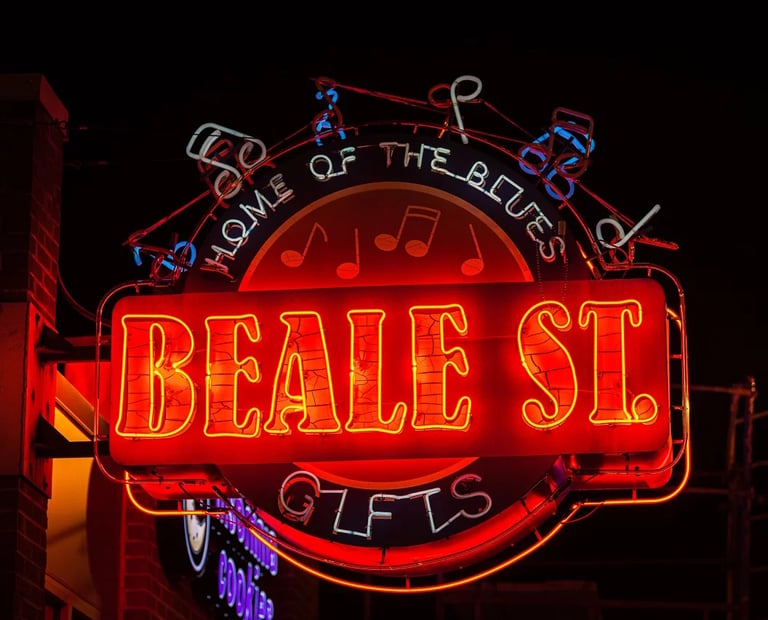

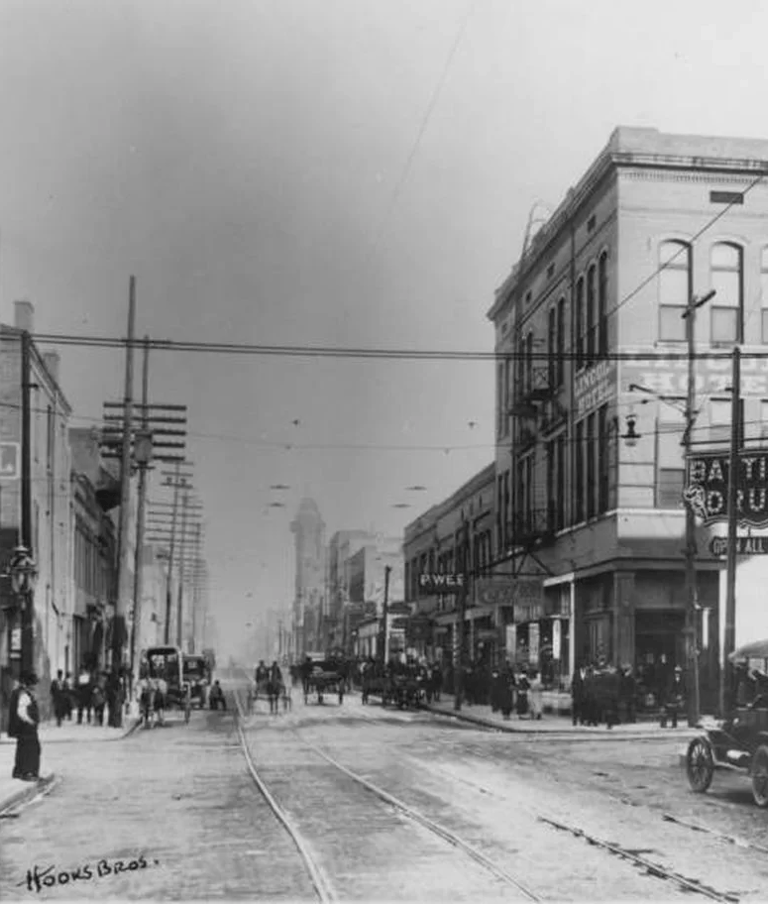

Originally named Beal Avenue after Edward H. “Ned” Beal, a hero in the "Mexican-American War", the Street and surrounding thoroughfares were designed as a walk-able Upper-Middle-Class District adjacent to downtown Memphis with a mixture of Shops, Apartments, and larger Residential Homes including the Hunt-Phelan Home which still stands today.
After the Civil War, the area drew a large number of Freed Slaves, Union officers, and Immigrants including Irish, Jewish, and, Italian who were attracted to the deep pockets of the residents in the area and the relatively accommodating reputation that was hard to come by in the post-war South.
In 1892, Handy gained a teaching job at the Teachers Agriculture and Mechanical College in Normal, Alabama and became the Director of the Collge Quartet Band. When the group read about the upcoming World's Fair in Chicago, they decided to attend. To pay their way, they performed odd jobs along the way. They arrived in Chicago and then learned that the World's Fair had been postponed for a year. Next they headed to St. Louis, Missouri, but found no work.
After the Quartet disbanded, Handy went to Evansville, Indiana. He played the cornet in the Chicago World's Fair in 1893. In Evansville, he joined a successful band that performed throughout neighboring cities and states. His musical endeavors were varied: he sang first tenor in a Minstrel Show, worked as a Band Director, Choral Director, Cornetist, and Trumpeter. At the age of 23, he became the Bandmaster of Mahara's Colored Minstrels.
After traveling with his Group through Chicago, throughout Texas and Oklahoma to Tennessee, Georgia, and Florida, and on to Cuba, Mexico and Canada... in 1902, Handy traveled throughout Mississippi, listening to various styles of popular Black Music. The Music there was part of the Culture, especially in Cotton Plantations in the Mississippi Delta... where the Musicians usually played Guitar or Banjo or, to a much lesser extent, Piano. There, he met one Prince McCoy... who had a String Band that gave a Sound he had not heard... and so began his love for the Mississippi Blues.
In 1903, he received an offer to direct a Black Band called the Knights of Pythias in Clarksdale, Mississippi. This job proved to be very rewarding and Handy remained there for six years. During this period in the Mississippi Delta, at a layover in the Tutwieler train station, Handy says he "... discovers the blues." He saw a man plucking a guitar using a knife on the strings - Hawaiian style. Handy said, "The effect was unforgettable and so was the song."... "He sang "Goin’ where the Southern cross’ the Dog," three times".
Over time, Beale Street became a focal point for the African American Community and a major part of Black Culture in Memphis, much like Bourbon Street was for New Orleans. African Americans made many contributions to Beale Street’s development, highlighted by one of its most famous entertainers... his Band played at Beale's famous Pee Wee Saloon.
W. C. Handy was inspired by a walk down Beale Street as he heard music from an African American cabaret and was driven to write his most famous tune – the acclaimed “Memphis Blues.”
Handy composed a song about a Memphis Mayoral Candidate, one Ed Crump, called "Boss Crump Blues". It became very popular so he changed the lyrics and renamed the song "Memphis Blues". It quickly caught on in the Clubs due to its unique sound and became so popular that Handy made a deal to get it published in 1912. He sold the rights to the song for the sum of $100 and unfortunately didn't reap the rewards of its success. To avoid this problem in the future, he published his next successful song ("St. Louis Blues") using his own Company "Handy Music Co". With the publishing of "Memphis Blues", Handy's Musical Style had been defined, and "Memphis Blues" became the first Blues Song.
Note: "St. Louis Blues" was sold at Memphis' Gerber's Department Store and became the first White store to sell Sheet Music from a Black Composer (1914). St Louis Blues will become one of the most recorded songs in the early history of Popular Music. Handy will say years later that the royalties create more money for him each year than he made from all previous years.
Several other hits followed including "Yellow Dog Blues" (1914) and "Beale Street Blues" (1916), "Joe Turner Blues", and "Jogo Blues", and "Yellow Dog Blues" was the local name for the Yazoo Delta Railroad. It was originally published as "Yellow Dog Rag" and didn't sell well. After Handy changed the name to "Y D Blues", it sold very well. Handy's melody for "Jogo Blues" came from his Preacher, who chanted the tune as the collection plate was passed.
William Christopher Handy is often called the "Father of the Blues" because of his enormous contribution, during the early years of this style of Music to the world. Handy himself stated that, far from inventing the Blues, he merely wrote the Songs down and brought the Blues to the Masses. This rather modest claim probably understates the importance of Handy's role in the development of Blues Music and even Jazz, Boogie, and Folk. His remarkable life started eight years after the conclusion of the Civil War ... which began a new era for black people. Handy would help define this new era by introducing Black Music to the World.
In 1918, Handy moved to New York City to be in the heart of the Publishing Industry. But he continued his connection to Memphis. He and his Band frequently returned to play engagements at the Robert Church Community Center Auditorium. Church had built this excellent auditorium that would draw major black performers to Memphis, and he also built a first-class Hotel (probably the Adler) where these performers could stay while they were in the City. During the Jim Crow years, this was a good arrangement for all.
Note: Clarence Saunders revolutionized the Grocery Industry by founding Piggly Wiggly America's first true self-service Grocery store, in Memphis, in 1916.
************
In Summary of Memphis, Beale Street became A "Melting Pot" of Sounds and a vibrant Hub for African American Music, attracting talented Musicians from across the South. This concentration of Musical talent created an environment ripe for innovation and cross-pollination of styles taking proto-Jazz to the next level.
The unique atmosphere of Beale Street, with its mix of Nightclubs, Juke joints, and vibrant Churches, contributed heavily to the birth of the Blues and proto-Jazz. The Street's culture combined elements of African Rhythms, Gospel Spirituals, and sang the harsh realities of life in the South to create a new, distinctly American musical form that was on its way to the BIG-Time.
Due to economic constraints, many Beale Street Musicians created innovative instruments using household items like Washboards, Kazoos, and Jugs. This led to the popularity of "Jug Bands," which became a distinctive feature of the evolution of the Memphis Music Scene.
Beyond just music, Beale Street became a cultural center for African Americans in the South. It was a place where Black-owned businesses thrived, creating an atmosphere of empowerment that influenced the Music produced there. Riverboat excursions docking in Memphis allowed Tourists to disembark and experience the City's Music Scene, supporting local Businesses and Cultural attractions.
In 1909, W.C. Handy wrote the first published Blues Song, "The Memphis Blues," which was inspired by the Sounds he heard on Beale Street. This marked a significant moment in the formalization and spread of the Blues and proto-Jazz Genres.
In addition to Guitar-based Blues, Jug bands, such as Gus Cannon's Jug Stompers and the Memphis Jug Band, were extremely popular practitioners of Memphis Blues. The Jug Band style emphasized the Danceable, Syncopated Rhythms of early Jazz and a range of other Folk Styles. It was played on simple, sometimes homemade, instruments such as Harmonicas, Violins, Mandolins, Banjos, and Guitars, backed by Washboards, Kazoo, Guimbarde, and Jugs blown to supply the Bass.
By 1920, Beale Street had served as a crucible for Musical Innovation, particularly in the realm of Blues Music. Its vibrant Culture, diverse influences, and concentration of Talent made it a pivotal location in the evolution of American Popular Music.
The Saint Louis Music Scene
St. Louis was a major Hub for Black Musical activity since before the Civil War... unlike Plantation-based Slavery in the Deep South, there was a Cultural exchange with all Blacks in St. Louis. An open environment for Musicians to migrate there as a Black "Middle Class" in the Mill Creek Valley area that had its own Clubs where Wannabee Musicians got their Start. Plus, Free Masonry was allowed for Blacks and free Blacks were treated fairly in Business making the ability for Blacks the spend money on entertainment.
By 1870, Sy. Louis had the third-largest Urban Black Community behind Baltimore and Philadelphia... as the fourth largest City in the US, it became a major Commercial-Industrial Center with the Mississippi River traffic the main avenue for Trade. With a thriving Community that could afford to pay for entertainment... so it became a magnet for Musicians to ride the Riverboats up from Memphis to make their Mark in the industry.
Both Memphis and St. Louis benefited from the Riverboat Trade spreading Blues and proto-Jazz upriver from New Orleans... Memphis maintained a grittier, Blues-infused style rooted in its African American Musical Traditions, while St. Louis would develop a more sophisticated and polished Sound through its intersection with top Riverboat Bands and Musicians, especially on their way to Chicago.
Starting in the 1890s, during a mild depression, the District known as Chestnut Valley became the home of St. Louis Ragtime. Businesses in Chestnut Valley included saloons and brothels, both of which hired musicians to play background Music. Ragtime music development was formalized by Tom Turpin from 1900 to 1906... he opened a Saloon called the "Rosebud Cafe" which was the only meeting-place for local Pianists and an incubation point for early Folk Ragtime. Musicians Joe Jordan, Louis Chauvin, Arthur Marshall, and Scott Joplin haunted the Joint for a packed House of integrated Dance lovers. The Market Place took up an entire City Block and featured several Bars, a Gambling Den, and a shabby Hotel... as times were tough, the Saloon was closed in 1906.
Among these Musicians was W.C. Handy, who was stuck in St. Louis for some months after leaving Chicago... times were tough and Handy was forced to sleep on the Levee and vacant lots with other musicians. During one of those nights, he heard a couple of shabby Guitarists repeat a one-line verse... "I walked all the way from East St. Louis... and I dint have but one po' measly dime." It would start the gears turning and he began composing. A stay in the Ghetto that was commemorated in his 1909 song "St. Louis Blues" (published in 1914). In addition, the area would be immortalized in the ragtime song "Frankie and Johnny" which described an 1899 murder that took place in Chestnut Valley.
As things got better in St. Louis, the Clubs began to open back up around 1910 and by 1916, the Blues had replaced ragtime as the predominant Sounds played in venues. By this time, many Pianists were playing only the Blues... such as Lee Green, Conroy Casey, Raymond Hine, and Willie Franklin... Handy's work during the transition from Ragtime to Blues to proto-Jazz, incorporating vocal blues melodies from African American Folklore into his Orchestral arrangements, helped formalize the conception of Blues as the Harmonic framework for improvisation. This evolution likely influenced the finalization of the St. Louis Blues Scene.
In Summary,
So, as there is no real Definition of exactly what "St. Louis Blues" is in comparison to the "Memphis Blues"... other than:
St. Louis Blues was an Urban, Piano-based Sound with more of a "Jazzy Blend" flavor than Memphis Blues and the Bands were bigger and more likely to play Horns and other Wind Instruments.
Memphis Blues had a stronger connection to Delta Blues traditions, relying more heavily on Guitar and Harmonica... with more emphasis on Rhythm and Drums creating a fuller, more grounded Sound. It had "more of a Bottom Sound to it" with a heavier, more resonant quality and was closer to the deep South Sounds.
The last, and most important fact was that Handy published the Songs based on St. Louis Sounds and the events he encountered... also, his Songs had more of a "Danceable" quality rather than just "listening"
Plus, around 1916, opportunities in Chicago and New York were opening up as the ability to earn more income from their Music was evident... the Publishing Industry in New York and the Harlem Renaissance was beginning and problems with prejudice was less.
In 1920, one Mamie Smithwas the first Black Female to record a Blues vocal... she changed the Blues Scene forever when she recorded “Crazy Blues”. The record sold over one million copies and allowed for many other artists to follow suit. It was said that “we can’t conceive of modern popular American Music without these early Blues Performers and Songs… and she was the first one to record this Style of Music.”
************
In Part #6, we cover the Music Scene of the West Coast (LA and San Francisco), the Midwest (St. Louis, Chicago, and Detroit), and the East (Baltimore, Philadelphia, Boston, and New York City.)... each took different approaches to the Sounds and ways of entertaining their Music Fans.
© ClassicRockTurntables.com
All Rights Reserved
